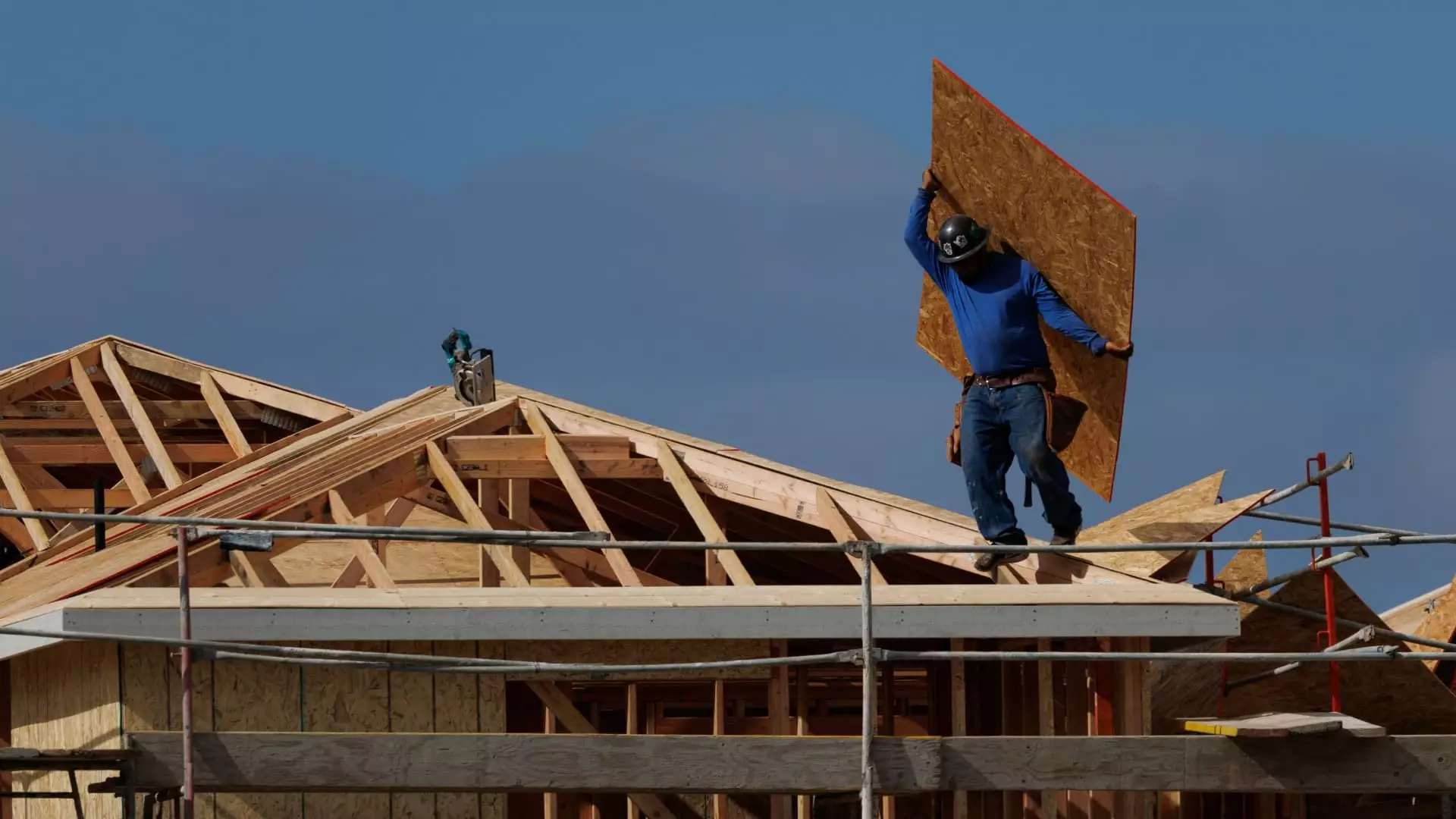Declining Confidence and Surging Losses: The Hidden Crisis in America’s Housing Market

The U.S. housing sector stands at a critical crossroads, revealing a troubling decline in builder confidence that signals deeper economic vulnerabilities. Despite a marginal uptick in the recent NAHB index from 32 to 33, the overall sentiment remains mired in negativity, with the index below the 50-point threshold for over a year and a half. This persistent downturn underscores the sector’s inability to rebound despite recent legislative efforts. This isn’t merely a fleeting market fluctuation; it points to structural issues that threaten the stability of the broader economy.
A key takeaway from the latest data is the escalation in price reductions—38% of builders resorted to lowering home prices in July, a figure that has not been matched since tracking began in 2022. This aggressive pricing strategy reflects bleak buyer prospects and dwindling demand. The average price cut of 5% illustrates that builders are increasingly willing to forgo margins to keep properties moving, yet this approach offers only temporary relief. It portends a long-term squeeze on profitability that could ripple across industries dependent on housing.
Economic Stimulus Fails to Offset Market Weakness
The passaging of the recent budget act and the resultant tax relief temporarily buoyed builder confidence and expectations, yet they offer only superficial respite. The core issues—particularly elevated mortgage rates—remain unaddressed, crippling affordability for prospective buyers. For months, mortgage rates have lingered within a narrow range at high levels, decreasing the likelihood of sustained demand.
This structural obstacle is compounded by the builders’ tactical response: rate buy-downs. While these efforts temporarily entice buyers, they erode margins without guaranteeing long-term success. Industry analysts like Jonathan Woloshin suggest that further reductions in mortgage rates and outright price cuts could deepen gross margin losses, possibly pushing some builders into financial precariousness. The delicate balancing act exposes their vulnerabilities and challenges the perception that government intervention alone can stabilize the sector.
The data reveals a stark decline in buyer traffic—at 20, it’s at its lowest point since late 2022. Similarly, the forward-looking sales expectations, although slightly improved to 43, still embody cautious optimism at best. Meanwhile, current sales conditions sit at 36, revealing a household market that remains hesitant and under pressure. These indicators collectively affirm that the housing market is neither recovering nor stabilizing but merely grinding through a period of economic hardship.
Regional Disparities and Structural Challenges
While all regions feel the pinch, the landscape remains uneven. The Northeast has shown a faint resilience, with sentiment edging slightly higher, but the South and West regions have witnessed further declines. This regional disparity hints at underlying demographic and economic factors—such as migration patterns, employment rates, and local affordability issues—that influence builder confidence and buyer activity differently across the country.
More troubling is the forecasted contraction in single-family housing starts. NAHB economists predict a decline for 2025, driven primarily by persistent affordability challenges and high interest rates. Permits are down 6% on a year-to-date basis, reflecting builders’ cautious outlook and an environment where traditional growth pathways are drying up. This situation is not sustainable; if home construction continues to decline, it could have cascading effects on local economies, employment, and the housing market’s long-term health.
Reflecting on these insights, it’s clear that the American housing market faces a complex web of economic hurdles that cannot be overcome solely through legislative tweaks or superficial stimulus. Without addressing fundamental issues—namely, making homes affordable and reducing borrowing costs—the sector risks spiraling into a prolonged period of decline. Weak confidence, falling sales, and price wars paint a bleak picture that demands a comprehensive strategy rooted in sound fiscal policy, structural reforms, and a recognition that the housing sector is a vital economic pillar that cannot be neglected without consequences.





